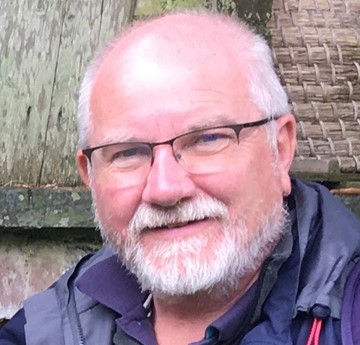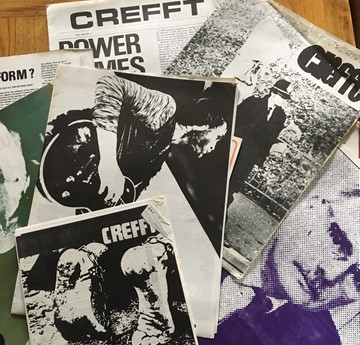Swansea University alumnus, David O'Carroll OBE, was a student between 1970-74. His time working on Crefft - the student newspaper - defined David's time at Swansea University, helping shape some of his fondest memories.
David's Memory
In the 1970s the Crefft Office was the hub of my student day. It is difficult to remember whether any of us aspired to become journalists. Certainly we spent many hours typing out news reports and articles on two mechanical typewriters; trying to make some sense out of the rugby teams match reports; smoking too many French cigarettes; and talking on the phone between puffs in the hope of getting a scoop - that never happened.
Two of us interviewed the Principal: the closest thing to a scoop and in the same issue a third journalist wrote a withering critique of an elderly economics lecturer. As I was the editor for that edition (we had a rota) it was me who faced rustication and me who had to make the apologetic phone call to the lecturer’s wife.

The newspaper office was on the top floor of Union House. A single room with two third-hand office desks and a four-drawer steel filing cabinet in which we locked away our work at night. Quite what we thought we had to keep secret escapes me now. In any case, there was a hole above the lock which could be tripped with a paperclip. The hole was covered by a mug with some mouldy fluid at the bottom.
Next door, running the whole width of Union House was the Print Room which had a medium-sized offset litho printing machine as well as stencil machines for the numerous notices and newsletters which landed on the tables each lunchtime in the Refec. This was the domain of Pam Hopkins. She was in charge of the type-setting machine. A complex, electric typewriter with exchangeable golf balls with different typefaces.
The receipt of one of Pam’s proof sheets always gave me a buzz. The imperfectly typed articles had been transformed into what appeared to be a proper typeset newspaper column. Sometimes our “typing errors”, also known as poor spelling, had been corrected. We only amended the minimum, especially if we were right against the print day deadline once a fortnight. Pam took our amended pieces, tut-tutting about the unnecessary work we were causing her, and using the coding that her first run had automatically produced on the proof copy, she prepared the beautiful justified columns that made up the newspaper.

Then came the sticky business of laying out the newspaper on a sheet that would be photographed to make the metal plates for the printing machine. The strips of paper were fed through the hot wax machine and then stuck onto the base sheet with a roller. This was quite often done late at night when we should have been in the student bar searching out news stories.
We never won any prizes for best university newspaper but quite often we were asked by other universities if they could copy an article for their paper. Plaudit enough. My studies in economics and politics did not prove immediately useful for my career in the Civil Service, though in 1978 I worked for a junior minister in charge of Press relations in Jim Callaghan’s ailing government. He was a boozy reporter from a newspaper in Rugby and we got on well as we shared the craft.
When personal computers were introduced in the 1990s my typing skills came to the fore!
